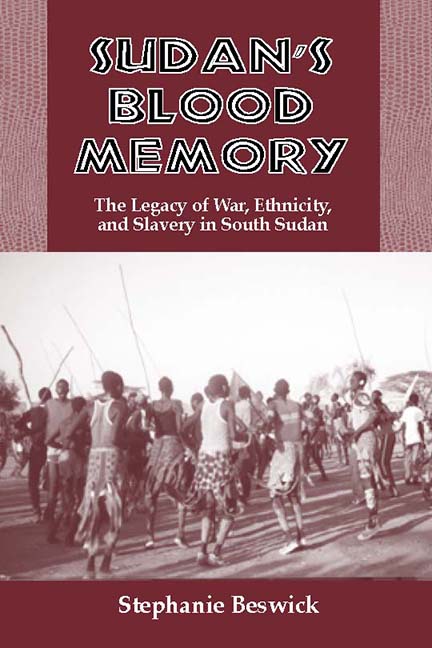Book contents
- Frontmatter
- Dedication
- Contents
- Maps
- Preface
- Acknowledgments
- A Note on Orthography and Languages
- A Note on Sources
- Map
- 1 Introduction
- 2 Geography and Brief History of Sudan
- 3 The Changing Nilotic Frontier
- The Ethno-Historical Formation of Southern Sudan
- 4 Slave Raids, Wars, and Migrations
- 5 Communities of the Sobat/Nile Confluence: The Padang
- 6 Communities on the Eastern Nile: The Bor
- 7 Communities in the Southwest: The Southern Bahr el-Ghazal
- 8 Communities in the Northwest: The Northern Bahr el-Ghazal
- The Ascendancy of the Dinka in Southern Sudan
- Foreign Intrusion and Its Consequences
- Notes
- Glossary
- Bibliography
- Index
5 - Communities of the Sobat/Nile Confluence: The Padang
from The Ethno-Historical Formation of Southern Sudan
Published online by Cambridge University Press: 23 July 2019
- Frontmatter
- Dedication
- Contents
- Maps
- Preface
- Acknowledgments
- A Note on Orthography and Languages
- A Note on Sources
- Map
- 1 Introduction
- 2 Geography and Brief History of Sudan
- 3 The Changing Nilotic Frontier
- The Ethno-Historical Formation of Southern Sudan
- 4 Slave Raids, Wars, and Migrations
- 5 Communities of the Sobat/Nile Confluence: The Padang
- 6 Communities on the Eastern Nile: The Bor
- 7 Communities in the Southwest: The Southern Bahr el-Ghazal
- 8 Communities in the Northwest: The Northern Bahr el-Ghazal
- The Ascendancy of the Dinka in Southern Sudan
- Foreign Intrusion and Its Consequences
- Notes
- Glossary
- Bibliography
- Index
Summary
In the previous chapter we saw how the Dinka confederation as a whole struggled militarily to find new homelands in Southern Sudan. This chapter is the first of four presenting the ethno-historical formation of central Southern Sudan. These histories offer an intimate view of the intensely complex structure of clan/lineage politics as the Dinka confederation moved into the heartlands of Southern Sudan and integrated with many other peoples. Further, these chapters suggest that the geographical position of the vast Dinka confederation was dictated by soil quality and type. This chapter specifically covers the formation of the Northern Nilotic frontier of the modern Southern Sudan including the Padang Dinka community. These histories also illuminate those other ethnic groups with whom the Dinka came in contact.
Today the Dinka comprise twenty-six major groupings, within which there is an association of numerous subclans. The males (and sometimes females) of these groupings mark their foreheads in a differing fashion to demonstrate the passage into manhood and to distinguish between sections. Each resides within in its own well-defined territory separated from each other by history and by natural boundaries such as rivers, swamps, and forests. Historically, these Nilotes came to be divided into three major geographical regions in Southern Sudan: the Padang, who reside at the borders of Northern Sudan and represent the far northern confederation of the Dinka; the Bor on the eastern bank of the Nile in southeastern Southern Sudan; and the Bahr el-Ghazal Dinka, who, as the numerically largest grouping, reside on the west bank of the Nile in the region stretching in an arc three hundred miles northwest to the Kir/Bahr el-Arab river in presentday Kordofan Province. In this volume, because of history and ecology, the latter group is divided into two; the northern Bahr el-Ghazal and the southern Bahr el-Ghazal.
The earliest Dinka clans to arrive in Southern Sudan were those known today as the Padang (in Dinka the “place/land of Deng”) or “Northern Dinka.” They initiated their migrations out of the Gezira in a southward direction following the Nile River between the period after the fall of the Nubian kingdom of Alwa in the thirteenth century and the arrival of the Western Nilotic Shilluk at the Nile/Sobat tributaries in the latter fifteenth century.
- Type
- Chapter
- Information
- Sudan's Blood Memory , pp. 43 - 53Publisher: Boydell & BrewerPrint publication year: 2004



